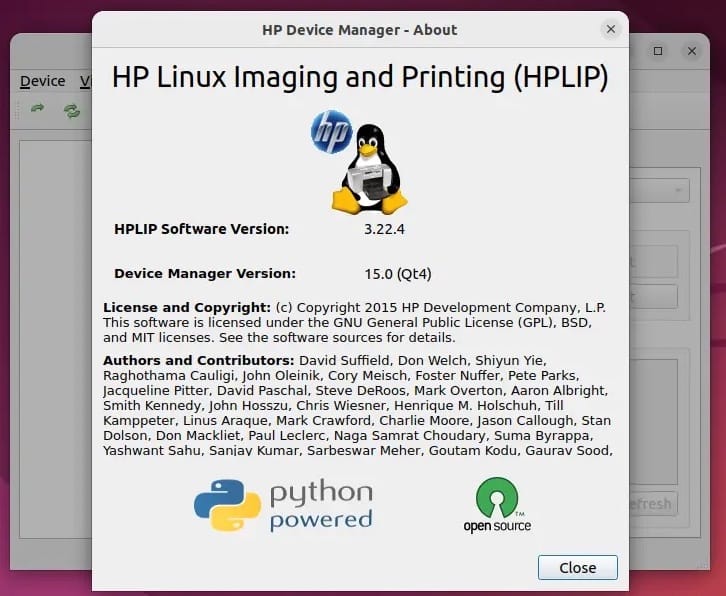How To Install HPLIP on Ubuntu 22.04 LTS

In this tutorial, we will show you how to install HPLIP on Ubuntu 22.04 LTS. For those of you who didn’t know, HP Linux Imaging and Printing (HPLIP) is critical software for Linux users who own HP printers and scanners. While Ubuntu often provides seamless printer support, installing HPLIP manually can unlock advanced features and ensure a smooth experience.
This article assumes you have at least basic knowledge of Linux, know how to use the shell, and most importantly, you host your site on your own VPS. The installation is quite simple and assumes you are running in the root account, if not you may need to add ‘sudo‘ to the commands to get root privileges. I will show you the step-by-step installation of the HPLIP (HP’s Linux Imaging and Printing software) on Ubuntu 22.04 (Jammy Jellyfish). You can follow the same instructions for Ubuntu 22.04 and any other Debian-based distribution like Linux Mint, Elementary OS, Pop!_OS, and more as well.
Prerequisites
- A server running one of the following operating systems: Ubuntu 22.04, 20.04, and any other Debian-based distribution like Linux Mint.
- It’s recommended that you use a fresh OS install to prevent any potential issues.
- To execute the necessary commands, you must open a terminal. Simply press Ctrl+Alt+T or search for “Terminal” in your application menu.
- For the installation of software and certain system configuration tasks, you need to have administrative privileges. You can either work as the root user or use the
sudocommand to temporarily gain superuser privileges.
Install HPLIP on Ubuntu 22.04 LTS Jammy Jellyfish
Step 1. First, make sure that all your system packages are up-to-date by running the following apt commands in the terminal.
sudo apt update sudo apt upgrade
Step 2. Installing HPLIP on Ubuntu 22.04.
- Install HPLIP from the Default Ubuntu Repository.
By default, the HPLIP is available on Ubuntu 22.04 base repository. Now run the following command below to install the latest version of HPLIP to your Ubuntu system:
sudo apt install hplip hplip-gui
- Install HPLIP from the Official Website.
Now we download the lasted version of HPLIP from the following link.
wget https://onboardcloud.dl.sourceforge.net/project/hplip/hplip/3.23.8/hplip-3.23.8.run
Then, run the installer via the command:
./hplip-3.23.8.run
Follow the on-screen instructions, and provide the basic info to build the HPLIP on your system, once the setup is completed unplug and plug the printer and start the printing.
Step 3. Accessing HPLIP on Ubuntu 22.04.
To set up HPLIP, first connect your device through USB, Network, Wireless, or Parallel Port. After that, open a terminal and issue the following:
hp-setup
Run a test to ensure that HPLIP has been successfully installed:
hp-check
To test your HP devices, you can use the hp-scan and hp-print commands in the Terminal. For example, to scan a document.

Congratulations! You have successfully installed HPLIP. Thanks for using this tutorial for installing HP’s Linux Imaging and Printing software (HPLIP) on Ubuntu 22.04 LTS Jammy Jellyfish system. For additional help or useful information, we recommend you check the official HPLIP website.